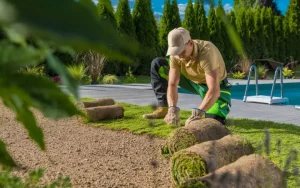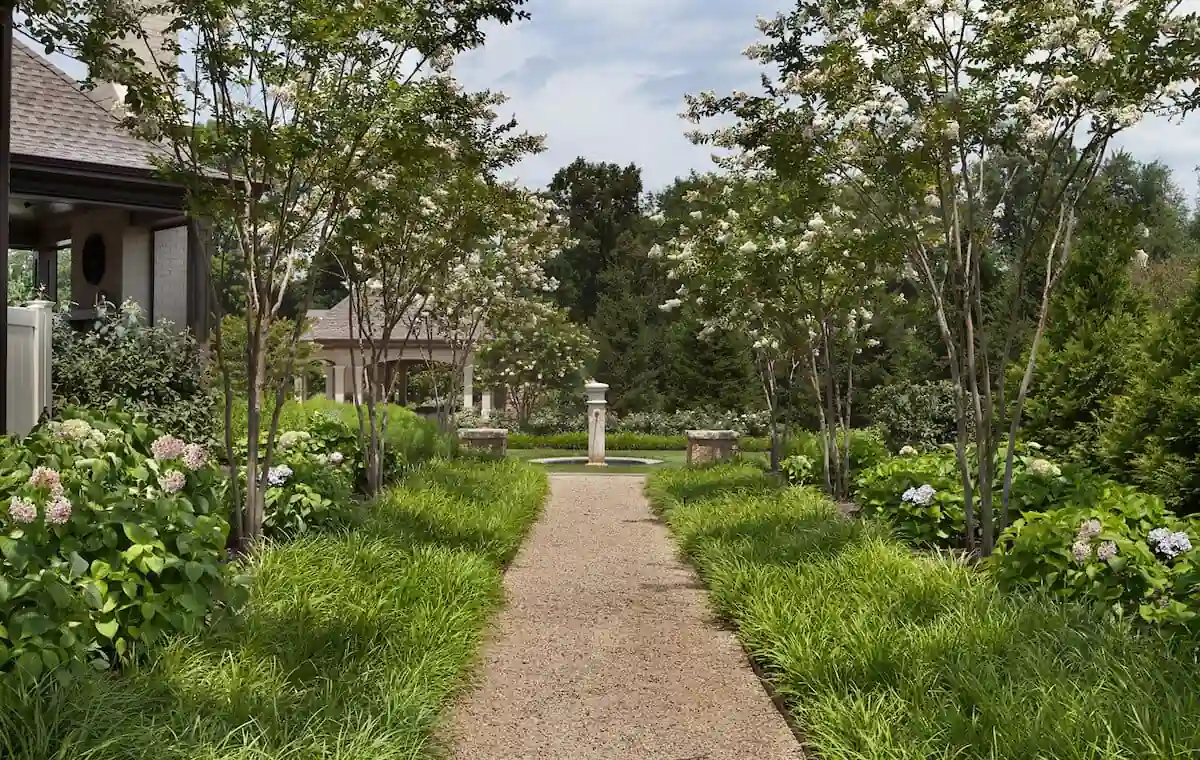In the ever-changing urban landscape, preserving biodiversity is essential. One promising approach is integrating native plants in paver installations. By using indigenous species, we can create wildlife-friendly habitats, combat urban heat, and enhance air quality. How can we effectively incorporate native plants in paver settings and address the associated challenges? Let’s explore the key considerations to maximize the benefits of native plant integration in urban areas.
Key Takeaways
- Native plants enhance urban biodiversity by providing habitat for local wildlife and supporting ecosystem services like pollution filtration and heat island mitigation.
- Permeable pavers and minimized soil compaction ensure native plant growth, while soil amendments support their health and resilience.
- Choose native species based on climate, soil type, and desired aesthetic, considering factors like drought tolerance, foot traffic, and shade.
- Integrating native plants with paver installations creates visually striking, resilient outdoor spaces that foster community engagement and support local biodiversity.
• Carefully selecting low-maintenance native species reduces upkeep requirements and promotes sustainable landscaping practices in urban ecosystems.
Urban Ecosystems Need Native Plants
Urban ecosystems, which are often characterized by fragmented habitats and degraded environmental quality, can greatly benefit from the incorporation of native plants, as these species have evolved to thrive in local conditions and provide essential ecosystem services. Native plants for sustainable landscaping enhance biodiversity, mitigate the urban heat island effect, and create habitat connectivity, ultimately improving the resilience of urban ecosystems.
Benefits of Native Plant Integration
By incorporating native plants into paver installations, landscape architects and designers can tap into a wealth of ecological benefits, from enhanced stormwater management to improved air quality, while also creating visually striking and resilient outdoor spaces. The advantages of native plant integration include:
- Improved biodiversity: Native plants provide habitat for local wildlife, supporting urban ecosystems.
- Enhanced ecosystem services: Native plants mitigate urban heat islands, filter pollutants, and regulate water cycles.
3. Increased aesthetic appeal: Native plants offer unique textures, colors, and forms, enriching urban landscapes with native plants for sustainable landscaping.
Overcoming Paver Installation Challenges
While the benefits of integrating native plants in paver installations are numerous, landscape architects and designers must also consider the unique challenges that arise when combining these two elements, including paver installation methods that can compromise soil quality and native plant growth. To overcome these challenges, designers should consider using permeable pavers, minimizing soil compaction, and incorporating soil amendments that support native plants for sustainable landscaping.
Choosing the Right Native Species
Choosing the finest Indigenous species for paver installations requires thoughtful evaluation of factors like climate, soil type, and desired aesthetic, as different species display different levels of tolerance to foot traffic, drought, and shade. When picking native plants for sustainable landscaping, take into account the following crucial factors:
- Moisture tolerance: Pick species that flourish in local moisture levels.
- Sunlight requirements: Make sure plants receive sufficient sunlight for peak growth.
- Maintenance needs: Select low-maintenance species to lessen upkeep.
Sustainable Landscaping in Action
Incorporating native plants into paver installations transforms urban spaces into thriving ecosystems, where carefully chosen species not only tolerate but also benefit from the unique conditions surrounding hardscapes. This approach to sustainable landscaping in action showcases the beauty of native plants for sustainable landscaping, creating habitats that support local biodiversity and foster a sense of community.

Frequently Asked Questions
Can Native Plants Thrive in Small Paver Installation Spaces?
Indeed, native plants can flourish in small paver installation spaces, provided they receive sufficient sunlight, water, and nutrients, and are carefully selected to match the site’s microclimate and soil conditions, ensuring a thriving ecosystem.
Do Native Plants Require Special Maintenance or Care?
Native plants generally require minimal upkeep, but some species may necessitate specific care, such as pruning or watering schedules, to guarantee peak health and performance in paver installations.
How Do Native Plants Benefit Urban Wildlife and Pollinators?
Native plants provide essential resources for urban wildlife and pollinators, offering shelter, food, and breeding grounds, while supporting local ecosystem services, such as pollination and pest control, thereby enhancing biodiversity and ecosystem resilience.
Can Native Plants Be Used in Combination With Non-Native Species?
In landscape design, combining native plants with non-native species can be a vital approach, but it’s essential to prioritize native plants as the dominant species to maintain ecological integrity and maximize biodiversity benefits.
Are There Any Regulations Around Using Native Plants in Landscaping?
Regulations surrounding native plant usage in landscaping vary by region, often governed by local ordinances, conservation organizations, and national policies, emphasizing the importance of researching specific guidelines before integrating native species into design plans.
Conclusion
Integrating native plants in paver installations offers a sustainable solution to enhance urban biodiversity. By selecting species adapted to local conditions, urban ecosystems can support native wildlife and provide ecosystem services. This approach can mitigate the urban heat island effect, improve air quality, and add aesthetic appeal to urban spaces. Overcoming installation challenges and selecting suitable native species are essential to creating resilient ecosystems that foster biodiversity and community well-being.
You May Also Like To Read:


